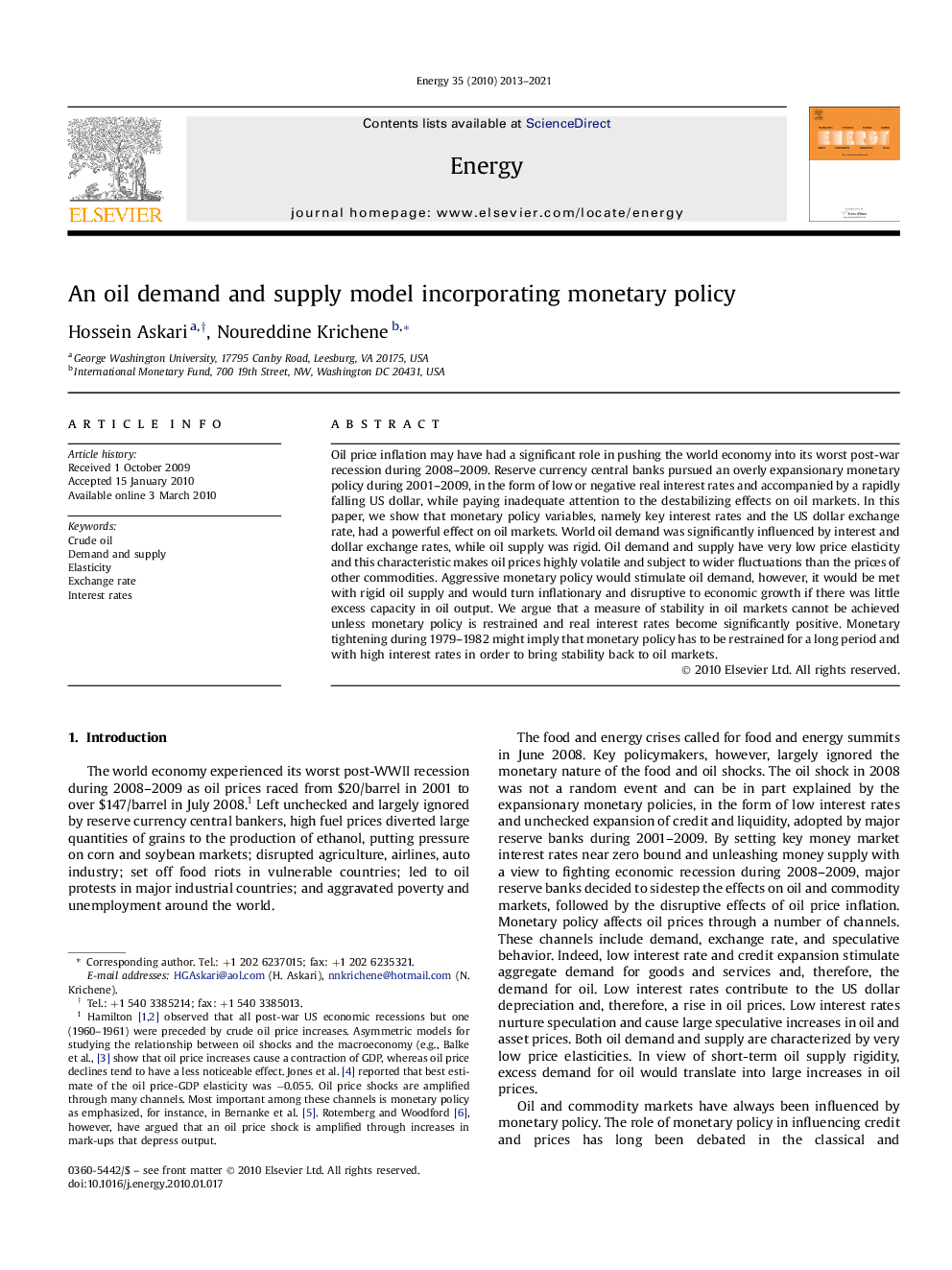| Article ID | Journal | Published Year | Pages | File Type |
|---|---|---|---|---|
| 1735526 | Energy | 2013 | 9 Pages |
Oil price inflation may have had a significant role in pushing the world economy into its worst post-war recession during 2008–2009. Reserve currency central banks pursued an overly expansionary monetary policy during 2001–2009, in the form of low or negative real interest rates and accompanied by a rapidly falling US dollar, while paying inadequate attention to the destabilizing effects on oil markets. In this paper, we show that monetary policy variables, namely key interest rates and the US dollar exchange rate, had a powerful effect on oil markets. World oil demand was significantly influenced by interest and dollar exchange rates, while oil supply was rigid. Oil demand and supply have very low price elasticity and this characteristic makes oil prices highly volatile and subject to wider fluctuations than the prices of other commodities. Aggressive monetary policy would stimulate oil demand, however, it would be met with rigid oil supply and would turn inflationary and disruptive to economic growth if there was little excess capacity in oil output. We argue that a measure of stability in oil markets cannot be achieved unless monetary policy is restrained and real interest rates become significantly positive. Monetary tightening during 1979–1982 might imply that monetary policy has to be restrained for a long period and with high interest rates in order to bring stability back to oil markets.
